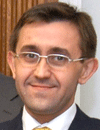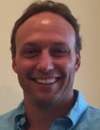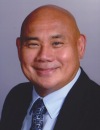Co-Located Conference AgendasFlow Chemistry Summit 2021 | The Space Summit 2021 | 

Thursday, 30 September 202108:00 | Conference Registration, Materials Pick-Up, Morning Coffee and Pastries | |
Session Title: Conference Opening Session -- Flow Chemistry Summit 2021 and The Space Summit 2021 |
| | 08:45 |  | Conference Chair Flow Chemistry-Current and Future Advances
Paul Watts, Distinguished Professor and Research Chair, Nelson Mandela University, South Africa
|
| 09:00 |  | Conference Chair Impact of Microgravity on Biological and Physical Systems
Marc Giulianotti, Program Director, International Space Station U.S. National Laboratory, United States of America
|
| 09:15 |  | Keynote Presentation NIH NCATS Tissue Chips in Space
Danilo Tagle, Director, Office of Special Initiatives, National Center for Advancing Translational Sciences at the NIH (NCATS), United States of America
|
| 09:45 |  | Keynote Presentation Bioprinting of Living Tissue Constructs For Space Exploration
Michael Gelinsky, Professor and Head, Center for Translational Bone, Joint and Soft Tissue Research, Faculty of Medicine, Technische Universität Dresden, Germany
For long-term space exploratory missions and extra-terrestrial human settlements, e. g. on Moon or Mars, the astronauts must be able to treat health problems on site as a fast return to Earth is impossible. 3D bioprinting is a promising technology which might allow fabrication of tissue constructs like skin and bone with limited equipment and materials which mostly could be produced locally. The presentation will give an overview about a study on bioprinting for space exploration which recently was carried out for the European Space Agency (ESA). We have investigated different bioprinting technologies, suitable biomaterials and also possible medical scenarios in which bioprinting might become an important tool. |
| 10:15 | Morning Coffee Break and Networking | 10:45 |  Effect of Microgravity on Bioprinted Tissues Effect of Microgravity on Bioprinted Tissues
Nicole Diamantides, Bioprinting Field Application Scientist, CELLINK
Bioprinting can be used to fabricate functional living tissues. These tissues can be used for a variety of applications from drug testing, studying disease pathology, regenerative medicine, and more. Recently, microgravity has been utilized both for understanding how tissues will respond to space travel and as a negative control for understanding how gravitation forces affect tissue formation and disease development. Here, we will discuss how the gene expression of stem cells is affected by space flight and simulated microgravity and how simulated microgravity can be used to understand glioblastoma mechanical regulation.
| 11:15 |  | Keynote Presentation What Can Biofabrication do for Space and what can Space do for Biofabrication?
Lorenzo Moroni, Professor, Biofabrication for Regenerative Medicine, Maastricht University and Founder MERLN Institute for Technology-Inspired Regenerative Medicine, Netherlands
Biofabrication in space, and in particular bioprinting, is one of the novel promising and perspective research directions in the rapidly emerging field of space biomedical sciences. There are several advantages of bioprinting in space. First, under the conditions of microgravity (µg), it is possible to bioprint constructs employing more fluidic channels and, thus, more biocompatible bioinks. Second, µg conditions enable 3D bioprinting of tissue and organ constructs of more complex geometries with voids, cavities, and tunnels. Third, a novel scaffold-free, label-free, and nozzle-free technology based on multi-levitation principles can be implemented under the condition of µg. The ideal space bioprinters must be safe, automated, compact, and user friendly. Thus, there are no doubts that systematic exploration of 3D bioprinting in space will advance biofabrication and bioprinting technology per se. Vice versa 3D bioprinted tissues could be used to study pathophysiological biological phenomena, when exposed to µg and cosmic radiation that will be useful on Earth to understand ageing conditioning of tissues, and in space for the crew of deep space manned missions. Here, we provide some leading concepts on what mutual benefit can be drawn by the application of biofabrication technologies in space, and sketch a future scenario where such marriage could enable advancements in space biological programs and of our ageing society. |
| 11:45 | Tissue Chips in Space: Human Cartilage-Bone-Synovium Microphysiological System for Post-Traumatic Osteoarthritis
Alan Grodzinsky, Professor of Biological, Electrical and Mechanical Engineering, Director of the MIT Center for Biomedical Engineering, Massachusetts Institute of Technology (MIT), United States of America
Post-traumatic osteoarthritis (PTOA) is caused by a traumatic impact joint injury associated with an augmented inflammatory environment (such as an ACL rupture). This results in loss of cartilage and impaired joint function, severely impacting the quality of life of otherwise healthy individuals, compounded by the fact that there are no disease-modifying drugs available for OA/PTOA, only short acting pain killers that do not halt disease progression. Astronauts may be at heightened risk of altered musculoskeletal physiology, thus impacting their Space mission. With an aim of PTOA disease management on Earth and supporting astronaut health during long space missions, our overall objective has been to develop a microphysiological system (MPS) to simulate aspects of PTOA pathogenesis and progression in vitro, and to use this MPS to develop therapeutic regimens incorporating appropriate drugs and dynamic exercise loading to prevent disease progression and stimulate pro-anabolic responses. Analyses to date from ISS experiments show changes in human knee tissues indicative of the earliest events in the initiation and progression of PTOA. The effects of human variability are also under study. Use of such an MPS on earth and in LEO-based platforms could enable accelerated disease modeling, providing unique insights into disease progression and development of therapeutic interventions. Effects of altered loading of joint cartilage in space may affect the rate of cartilage breakdown leading to OA. Microgravity may uniquely enable the study of joint-disuse versus exercise in management of OA and PTOA. | 12:15 | Networking Lunch | 13:30 |  | Keynote Presentation Microfluidic Systems for Asteroid Minerals Processing and Nanoformulation of Fortified Designer Beverages for Astronauts
Volker Hessel, Professor,, The University of Adelaide, Australia
Space laboratories are the ultimate disruptive barrier and the modern playground for out-of-box thinking. Space manufacturing and resource utilization is the key to human space exploration. Flow chemistry is the ideal technology for chemical manufacturing in space – it operates (even on Earth) at ‘zero-gravity’, is suited for vacuum operation, while being light-weight and ready for remote control
Two advanced microfluidic reactors - a coiled-flow inverter (CFI) and an industrial re-entrance flow reactor from Corning® were operated at high (Asteroid) metal concentrations and high nickel to cobalt ratios (3:0.3 mol/l Ni:Co). Using Cyanex 272 as a selective extractant for cobalt, extraction efficiencies of 60% with high separation factors (>1000) were reached in just one extraction stage. The CFI showed high extraction efficiency for a residence time of 60 s. The Corning® reactor performs better at higher flow rates and thus can leverage higher productivity. Finally, the meteorite Campo del Cielo, the third-largest one which ever hit Earth, was leached and extracted at maximal 87% efficiency.
We aim to develop a space beverage system that allows astronauts to adjust the beverage’s taste and nutritional value to individual likes and needs, utilizing beverage nanoemulsions to incorporate hydrophilic (micro-)nutrients and flavour components. Thereby, we can address space-specific health threats such as microgravity-related bone loss with an increased intake of omega-3 fatty acids. By using literature reported solvent/surfactanant compositions, “spontaneous emulsification” nanoemulsions (d32 ˜ 100 nm) were reliably obtained. Compared to a conventional burette setup, a microfluidic device was able to form emulsions considerably faster (time reduction by a factor of 5) and potentially more efficiently, i.e. forming emulsions with smaller droplet sizes at certain surfactant concentrations.
|
| 14:00 | One-Step Gene Sampler Tool for Genetic Analysis on ISS
Gergana Nestorova, James C. Jeffrey, M.D. Endowed Professorship in Pre-Med, Louisiana Tech University, United States of America
The aim to support an extended human presence in space has led to the establishment of NASA’s GeneLab, which combines a database repository dedicated to ISS biological experiments and corresponding ground-based studies. The biggest constraints for real-time genetic analysis of biological specimens in space are the time that is required for the astronaut to process the sample and the reduced working area on ISS. Because of these limitations, the number of samples that are currently being analyzed in space is very low. The One-Step Gene Sampler tool can significantly reduce the time required for genetic analysis on ISS and therefore could increase the number of samples analyzed in space. This presentation will discuss the design, application, and validation of this technology on ISS. At the core of this tool is a microscopic pin for the purification of nucleic acid that is analyzed by the WetLab-2 facility currently on station. The Gene Sampler tool can be used for RNA purification at various locations of the biological sample and does not require sacrificing of the specimen. Most valuably, the probes need no further processing to separate RNA from the sample. The specimen’s RNA hybridizes to the surface of the probe and no nuclear contamination occurs. Sampling is completed after a minimum of two-minute insertion into the specimen and the probe can be analyzed directly in the ISS SmartCycler instrument. Instead of using the conventional liquid-based process, the purification of genetic material now can be performed dry, utilizing a functionalized metal pin that is compatible with the ISS environment and analytical tools. The technology was launched on SpaceX CRS-21 and validated by Dr. Kate Rubins in February 2021. | 14:30 | Human Multi-Tissue Platform to Study Effects of Space Radiation and Countermeasures
Gordana Vunjak-Novakovic, University Professor, Columbia University, United States of America
Cosmic radiation is the most serious risk encountered during long missions to the Moon and Mars. There is a compelling need to understand the exact effects of cosmic radiation, safety thresholds, and mechanisms of various types of tissue damage, in order to develop measures for radiation protection during extended space travel. As animal models fail to recapitulate the exact mutational changes expected for astronauts, engineered human tissues and “organs-on-a-chip” are valuable tools for studying effects of radiation in vitro. We have developed bioengineered tissue platforms in which we can study radiation damage in a patient-specific setting. All tissues are derived from induced pluripotent stem cells cultured for a period of 4-6 weeks and matured to match some aspects of human physiology. We describe here the studies of radiation effects on bone marrow (a site of acute radiation damage) and cardiac muscle (a site of chronic radiation damage). To this end, we investigated the effects of simulated high-LET cosmic ray exposures, both acute and protracted, on human tissues connected by vascular perfusion. We propose that the engineered human tissue systems can provide test beds for radioprotective therapeutics to mitigate radiation damage during space exploration. | 15:00 | The NATO Project: Nanoparticle-based Countermeasures for Microgravity-induced Osteoporosis
Livia Visai, Associate Professor, University of Pavia, Italy
Recent advances in nanotechnology applied to medicine and regenerative medicine have an enormous and unexploited potential for future space and terrestrial medical applications. The Nanoparticles and Osteoporosis (NATO) project aimed to develop innovative countermeasures for secondary osteoporosis affecting astronauts after prolonged periods in space microgravity. Calcium- and Strontium-containing hydroxyapatite nanoparticles (nCa-HAP and nSr-HAP, respectively) were previously developed and chemically characterized. This study constitutes the first investigation of the effect of the exogenous addition of nCa-HAP and nSr-HAP on bone remodeling in gravity (1 g), Random Positioning Machine (RPM) and onboard International Space Station (ISS) using human bone marrow mesenchymal stem cells (hBMMSCs). In 1 g conditions, nSr-HAP accelerated and improved the commitment of cells to differentiate towards osteoblasts, as shown by the augmented alkaline phosphatase (ALP) activity and the up-regulation of the expression of bone marker genes, supporting the increased extracellular bone matrix deposition and mineralization. The nSr-HAP treatment exerted a protective effect on the microgravity-induced reduction of ALP activity in RPM samples, and a promoting effect on the deposition of hydroxyapatite crystals in either ISS or 1 g samples. The results indicate the exogenous addition of nSr-HAP could be potentially used to deliver Sr to bone tissue and promote its regeneration, as component of bone substitute synthetic materials and additive for pharmaceutical preparation or food supplementary for systemic distribution. | 15:30 | Afternoon Coffee Break and Networking | 16:00 | View Afternoon Program on the Flow Chemistry Summit Website | 19:00 | Close of Day 1 of the Conference |
Friday, 1 October 202108:00 | Morning Coffee, Pastries and Networking | 08:30 |  | Conference Chair Chairperson's Opening Remarks
Jana Stoudemire, Director, In-Space Manufacturing, Axiom Space, United States of America
|
| 08:45 | In-Line Analysis In Flow: The Gateway to Smart Synthesis and Machine Learning in Chemistry
Michael Organ, Professor and Director of the Centre for Catalysis Research and Innovation , University of Ottawa, Canada
In-process reaction monitoring with GCMS, LCMS, and NMR spectroscopy has
been developed to accurately track reaction performance. This has
facilitated the incorporation of feed-back loops between the reactor
effluent stream and the front end of the reactor using in-house
developed software for hands-free continuous reaction optimization and
production monitoring. Of course, samples must first be extracted from
continuous processes in order to perform the above mentioned in-line
analysis. This is often times thwarted by the presence of solids in the
flowing stream, which can both block lines and valves and make analyses
inaccurate. We have developed technology for the reliable handling of
samples that contain solids from flow streams, which will be discussed. | 09:15 | Automation, Machine Learning, and Robotics for Flow Chemistry Optimization
Klavs Jensen, Professor, Massachusetts Institute Of Technology, United States of America
Advances in flow chemistry enabled by automation, machine learning,
robotics, and on-line analytics are highlighted through case studies,
including an automated droplet microfluidic electrochemistry platform
for redox neutral electrochemistry, reaction optimization and
characterization of kinetics, (2) an automated cascade of miniaturized
continuous stirred tank reactors (CSTRs) for optimization of flow
chemistry and photo-redox catalysis involving suspensions of solids, and
(3) an automatic, robot assembled, reconfigurable modular
micro/mini-fluidic system for execution and optimization of multistep
reactions. Machine learning models for retrosynthesis and forward
prediction combined with reaction context identification provide
computer aided synthesis pathway planning for this system. We describe
and compare different optimization strategies and discuss challenges and
opportunities in further integration of machine learning and synthesis
platforms. | 09:45 | Microfluidic Systems based on Multi-phase Designer Solvents with Aim to Automate Purification and Recycling Reactants
Volker Hessel, Professor,, The University of Adelaide, Australia
Novel Process Windows with their unusual, typically harsh process
conditions have enlarged the processing portfolio. Recently, we have
developed a biomimetic processing concept that aims to develop flexible
compartments for integrated reactions in a way as organelles (vacuoles)
in a cell do. The compartments are formed by self-organising media by
multi-phase designer solvents. In this way, cascade reactions may be run
automatically in just one reactor (ONE-FLOW), which is compartmented to
the complexity needed.
The presentation will show (1) the use of
solubility modelling for finding the best solvents out of a myriad of
choices, (2) the performance/opportunity and problems at a model
reaction with organocatalyst, (3) the performance/opportunity and
problems at a model reaction with enzyme catalyst, (4) a life cycle
assessment for an industrial process (3-step ibuprofen) under favourable
assumptions and tailored to the idea, (5) a life cycle assessment for
an industrial process (1-step or 2-step rufinamide) under reported
industrial conditions and not ideally tailored to the idea, and (6) a
comparison of all classes of designer solvent per life cycle assessment
impact category; the latter comprises ionic liquids, scCO2, fluorous solvents, thermomorphic solvents, and deep eutectic solvents. | 10:15 | Morning Coffee Break and Networking | 10:45 |  | Keynote Presentation Continuous Flow in the High Desert: Tales from Los Alamos National Laboratory
Amanda Evans, Scientist, Los Alamos National Laboratory, United States of America
Los Alamos National Laboratory (LANL) has a long history of using state-of-the-art technologies for making molecules and developing processes fundamental for securing the defense of the United States. Continuous flow processing paradigms and inline analytical technologies provide unique avenues for safely optimizing and scaling chemical syntheses while affording improved understanding and control of reaction kinetics. Examples of integration of continuous flow and inline analytics into diverse production practices at LANL will be presented, as will a discussion of how U.S. national labs (inclusive of the ISS) can benefit from the innovations that flow chemistry can provide for materials and medical countermeasures production. |
| 11:15 | In Space Production, Chemistry and Crystals
Ken Savin, Senior Program Director, In Space Production, International Space Station US National Lab, United States of America
Access to the microgravity environment of Low Earth Orbit offers industry production opportunities not possible terrestrially. This presentation will focus on ISS National Lab efforts around in-space production, manufacturing processes and intellectual-property generation with a focus on chemistry applications that enable new business growth and represent markets that could generate revenue from access to space. This is a unique opportunity to keep up with the production and IP opportunities for advanced materials products and pharmaceuticals. | 11:45 | Accelerated Development of Quantum Dots by Autonomous Robotic Experimentation in Flow
Milad Abolhasani, Associate Professor , North Carolina State University, United States of America
In this talk, I will present the Artificial Chemist technology, that is,
a modular flow chemistry platform operated by a machine learning-guided
decision-making algorithm for accelerated development of
energy-relevant colloidal nanomaterials. I will discuss the unique
advantages of reconfigurable flow reactors for autonomous multi-step
synthesis, optimization, and continuous manufacturing of colloidal
quantum dots (QDs) for direct utilization in next-generation photonic
devices. The Artificial Chemist can rapidly and efficiently (i) explore
and learn the synthesis and processing universe of colloidal QDs, (ii)
identify the composition and relevant synthesis and processing route(s)
of QDs to achieve specific optical or optoelectronic properties, and
(iii) continuously manufacture the rapidly optimized QDs at a fraction
of time/cost of currently utilized batch techniques. The developed
autonomous robotic experimentation strategy can be readily adapted for
accelerated development and end-to-end manufacturing of other
solution-processed nanomaterials. | 12:15 | Networking Lunch | 13:00 | Skeletal Muscle Tissue Chip for Studying Contractile Differences Between Young and Old-derived Cells in Gravity and Microgravity Environments
Siobhan Malany, Associate Professor, University of Florida and Founder, Micro-gRx, United States of America
Aging and spaceflight share similar physiological effects on muscle atrophy and effective countermeasures are needed for both Earth and Space applications. We have validated a microfluidic microphysiological system (MPS) that demonstrates electrically stimulated contraction of human-engineered muscle myobundles derived from muscle biopsies from older, sedentary (OS) adults compared to those derived from young, athletic (YA) adults as a model of age-related muscle disfunction. After 16 days in culture, the engineered myobundles receive an intermittent daily pulse sequence for 8 days. The number and thickness of fused and striatal myofibers and contraction magnitude are increased in the OS group and begin to resemble the YA phenotype indicating the cells retain their donor phenotype and respond to external stimuli by triggering protein synthesis. Drug treatment with Tomatadine, a natural anabolic compound changes contractile function in both cohorts and will also be discussed. Our YA and OS-derived myobundles were integrated into an autonomous laboratory and sent to the ISS for 10 days on Space X CRS-21 during which time, on-orbit, real-time contraction was downlinked. | 13:30 |  Launching a Future for Health and Technology: Strategic Middleware on the ISS and Beyond Launching a Future for Health and Technology: Strategic Middleware on the ISS and Beyond
Alain Berinstain, Chief Innovation Officer, Space Tango
| 14:00 | How Nanotechnology Can Enable Research in Space
Veerle Reumers, R&D Manager, imec USA, Belgium
As we venture further into space and extend our capabilities in low-earth-orbit, the need for compact and low power instrumentation becomes evident. The characteristics of the space environment pose a technical challenge on the devices that can be deployed. The volume, mass and weight of the instrumentation that can be shipped, installed or manufactured in space is extremely limited. Imec aims to address these challenges by developing miniaturized technologies resulting in an increase in data capture ability per unit of physical space. We are currently preparing three different imec technologies to be validated in a space relevant environment with the aim to show their value in space research and manufacturing purposes. | 14:30 | Injectable Nano-Matrix for Cartilage Tissue Chips
Yupeng Chen, Associate Professor, University of Connecticut, United States of America
Absence of biomechanical loading in microgravity can result in articular cartilage degeneration. Once damaged, cartilage has very limited self-regeneration. Therefore, many biomaterial scaffolds have been developed for cartilage tissue engineering. Conventional solid scaffolds are not injectable so they have limitations for applications in “difficult-to-reach” locations, such as microchannels of tissue chips or deep-tissue damage; hydrogels are semisolid materials so they don’t have solid surface for cell anchorage which could be a limitation in space. To overcome this challenge, we have developed a family of self-assembled scaffolds, named Nano-Matrices (NMs). NMs are formed by the self-assembly between Janus base nanotubes (JBNTs, non-covalent nanotubes mimicking DNA base pairs) and extracellular matrix proteins (such as matrilin, a cartilage specific protein). We have also found that the NM presented synergistic functions from JBNTs and matrilin, which can create a micro-environment selectively promoting chondro-lineage cell growth and differentiation. Moreover, NMs, as a solid scaffold, have excellent injectability that can be applied in the microchannels of tissue chips to improve cartilage cells anchorage and functions. Therefore, the NM may be a suitable tissue engineering scaffold for cartilage tissue chips on Earth and in space. | 15:00 | Engineering High-Content Human-based Models for Potential Space Research
Y. Shrike Zhang, Assistant Professor of Medicine, Harvard Medical School, Associate Bioengineer, Division of Engineering in Medicine, Brigham and Women’s Hospital, United States of America
3D biofabrication offers great versatility in the generation of biomimetic volumetric tissues that are structurally and functionally relevant. This talk will discuss our recent efforts in developing high-content human-based models through biofabrication, which when combined with microfluidic chip-based systems, are likely to provide new opportunities for research benefiting human health both in space and on Earth. | 15:30 | A Systems Biology Approach to Post-Traumatic Osteoarthritis (PTOA) Disease Biology and Biomarkers
Begum Alaybeyoglu, Principal Scientist, Javelin Biotech, United States of America
Understanding metabolic dysregulation in musculoskeletal disorders facilitates discovery of biomarkers and supports development of disease modifying drugs (DMDs). Previous omics studies provided extensive knowledge and diagnostic marker candidates for osteoarthritis (OA), despite the lack of consensus in molecular signature due to disease heterogeneity and patient variability. Our study focused on circulating metabolites for investigation of non-invasive early biomarkers of post-traumatic OA (PTOA) to understand disease initiation and progression using an ex vivo human disease model. We studied the altered metabolism on earth and in space to demonstrate donor variability and effect of microgravity for discovery of early PTOA disease biomarkers and DMDs. | 16:00 | Close of Conference |
|


 Add to Calendar ▼2021-09-30 00:00:002021-10-01 00:00:00Europe/LondonThe Space Summit 2021The Space Summit 2021 in BostonBostonSELECTBIOenquiries@selectbiosciences.com
Add to Calendar ▼2021-09-30 00:00:002021-10-01 00:00:00Europe/LondonThe Space Summit 2021The Space Summit 2021 in BostonBostonSELECTBIOenquiries@selectbiosciences.com